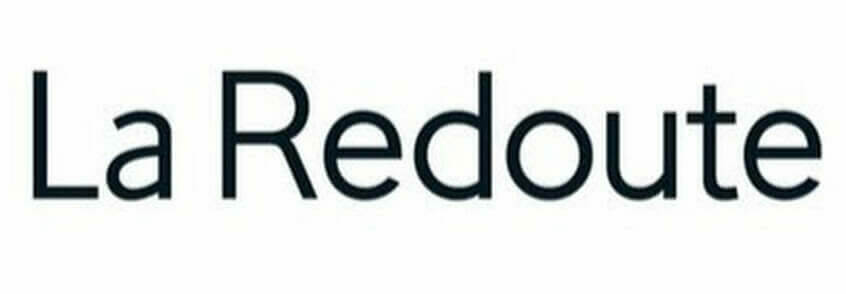Why? Because this generation are the ones constructing design for tomorrow!
In parallel with our M&O x Peclers-Patricia Beausoleil collaboration, we spoke with a young designer honored by the Rising Talents Awards at the Maison&Objet 2020 fair.
In exclusivity for Peclers, she shares her vision of design. Let’s meet her:
Wendy Andreau describes herself as a “designer craftswoman” for whom processes and work with materials are almost more important than the result. This highly independent person and true fighter, a graduate of Ecole Boulle and the Eindhoven Design Academy , takes an innovative approach to materials like steel, aluminum and textiles, finding new uses for them by inventing her own tools.
Regen, her project selected by Maison&Objet Rising Talents Awards 2020 transforms 3D textiles into rain clothes and accessories without sewing or cutting patterns …
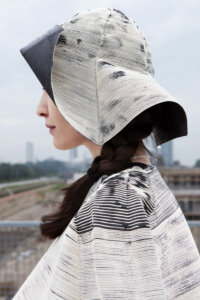
by Ronald Smits
Sandrine Maggiani: How would you describe your Regen project?
Wendy Andreu: I would describe it as “a new artistic craftsmanship”. Regen (which means “rain” in Flemish) is a nonwoven, non-knitted fabric. Its manufacturing method offers infinite possibilities that I continue using today even though I came up with the idea in 2014! The principle: I glue cotton cord with silicone to create 2D or 3D textile objects. For this project, I made metal tools and patterns for fashion accessories or furniture that can be reused. This process can use many different shapes and adapt to various contexts or client requests.
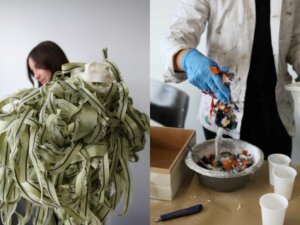
SM: In your approach to materials, which ones do you prefer to work with?
WA: Steel and metal. Industrial scrap materials whose power of transformation has not yet been sufficiently optimized and that continues to surprise me.
SM: What did design teach you that you wish to transmit ?
WA : To encourage naivety, a type of amateurism that lets us find alternative, innovative solutions. Not knowing much about textiles helped me imagine Regen. To go beyond sometimes-limited academic skills and explore other techniques. To not wait but rather find solutions to manufacture, produce and sell independently and ultimately to collaborate since we must interact with different trades to realize our projects.
“Not knowing how to do it” is the best means to finding new solutions and skills …”
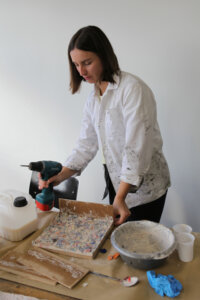
SM: In what way have you decided to contribute to creating sustainable solutions?
WA : I chose to do less and better. Regen creates 3D and 2D textile shapes without losing materials and I produce in a handcrafted way so thus make very few pieces each year. To be able to develop my textiles with organic materials and no longer use silicone, I am currently seeking a financial backer … I’m confident and this will not prevent me from evolving the project!
SM: In the future, what effects would you like design to have on everyday life?
WA: Materials play a role in my identity as a designer, I will thus continue to explore them in a sensory, well-thought-out way. I understood the power of waste as an alternative resource when I collaborated with the New Order of Fashion et Sunbrella. In the future I would like to contribute to making waste products be a raw material on the same level as wood or metal. We can’t lose the use of our senses to the profit of the digital or tactile, I will continue to produce desirable, 3D textured objects that we want to keep. The idea is to push back the moment where humanity passes to the completely digital and also to eradicate fast consumerism!
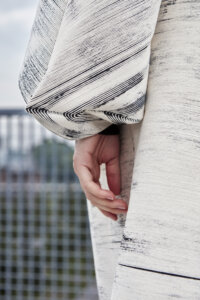
by Ronald Smits





